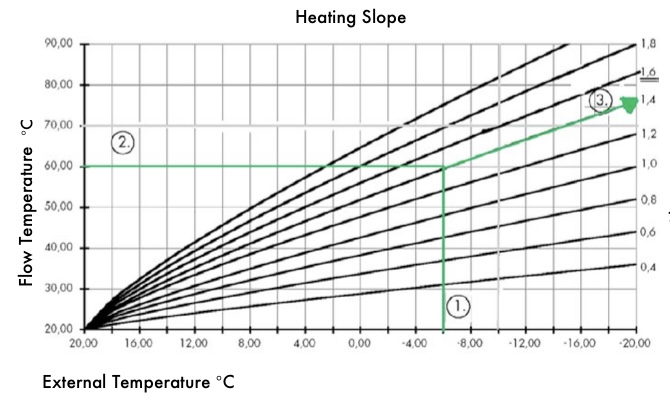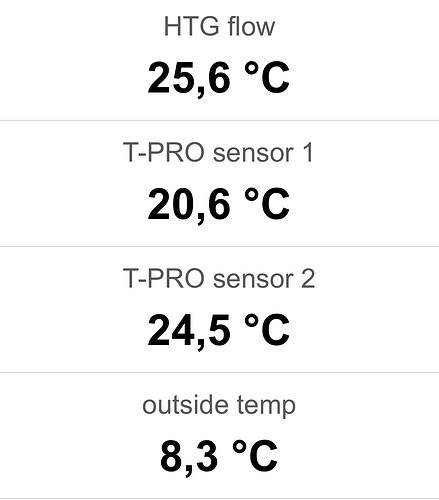Hi Henri,
Thanks for your questions, I will try to answer as best I can.
My indoor temperature sensor is not in the ideal place, it is in the warmest room of the house and is not representative of the whole house.
It’s where it is because it didn’t work in my hallway, no other reason.
So my house isn’t really 23c.
I can run the heat pump at 26c/27c as long as I have 4c overshoot or manage the start up a bit.
But I find no point, it doesn’t really use any less electricity and the heat pump isn’t that happy.
I think we need to go back to basics, the heat comes from the dT and the flow rate, the actual flow temperature is irrelevant in respect of the heat produced.
Running lower flow temperatures should result in lower energy consumption and it does to a point but if going lower uses no less electricity then there’s no real point.
It doesn’t matter if I run at 10lpm and 27c/24c or 10lpm and 31c/28c, the heat produced is the same.
I get very little less heat running at 27c than I do at 31c, the radiators give up all the heat they can.
My radiators are quite large so i get a fair bit of heat whatever I do, and that is because the radiators can cope.
So really it is about finding a flow temperature that works best.
What I see happen is that I just run at 31c, if the house is colder I get more heat as the flow rate increases to satisfy what the radiators can deliver, as it gets warmer the radiators can output less so the heat goes down.
I have picked a flow temperature that gives me the best COP and it also gives a house temperature that is fairly stable and that I am happy with.
The heat pump is the same as all the other 8kW Daikin’s so at warmer temperatures if my heat pump needs 500w to produce 2,500w of heat then so will all the others. The COP’s should be fairly similar once the benefit of my large radiators is removed.
Where I benefit is when it is much colder, I don’t need to increase my flow temperature much, if anything, as my radiators just give out more heat as the heat loss increases.
So my flow temperature will never change much, in fact, as it gets colder I can reduce it because the compressor is most happy at a certain load.
I can easily get all the heat I need sub 5c outside with a flow temperature of 28c to 30c. The radiators work better as it gets colder and so I don’t need such a `high’ flow temperature to put the heat pump under load.
What I need is a reverse wdc where the flow temperature reduces as the outside temperature falls.
For these reasons, I don’t use the Madoka or a wdc, I just run fixed lwt and turn the heat pump on and off as necessary and adjust the flow temperature to suit.
My biggest problem at the moment is I have to run as ufh to get the overshoot of 4c, it is not available in fan coils or radiators. I don’t like either fan coils or ufh with the fixed dT. I want to run as radiators, it has a fixed dT of 10c that I will never get but I end up with the lowest flow rate and I find that works best.
I could try ufh with a higher dT but I haven’t yet, I don’t know what the differences are exactly between the three modes but ideally I want to run as radiators. Hopefully Daikin will fix this soon. Then I think I could run lower in a more stable fahion.
I hope it makes sense but the key is here that flow temperature doesn’t control heat produced, dT and flow rate does.
On the topic, in theory my extra radiator should help.
It is going somewhere with a much higher heat loss and should output around 600w at the flow temperatures we are looking at when it is 10c or more outside. This means that I should be able to reduce the flow temperature, still get 2,500w or so overall to keep that heat pump happy but have 600w or so somewhere else and less than 2,000w going in the house.
The heat pump should be happy at that sort of load, my office will be heated for free and I’ll have a bit less heat in the house. Maybe the COP will improve a bit in the warmer weather compared to now. It should be all good news.


